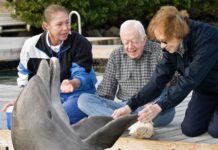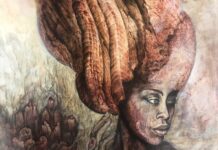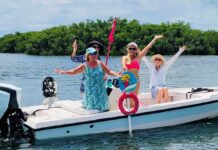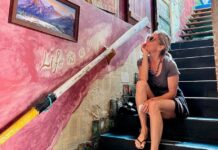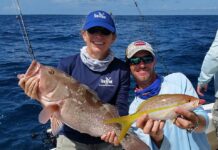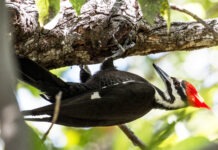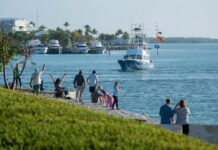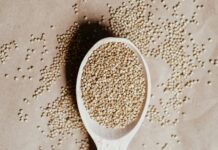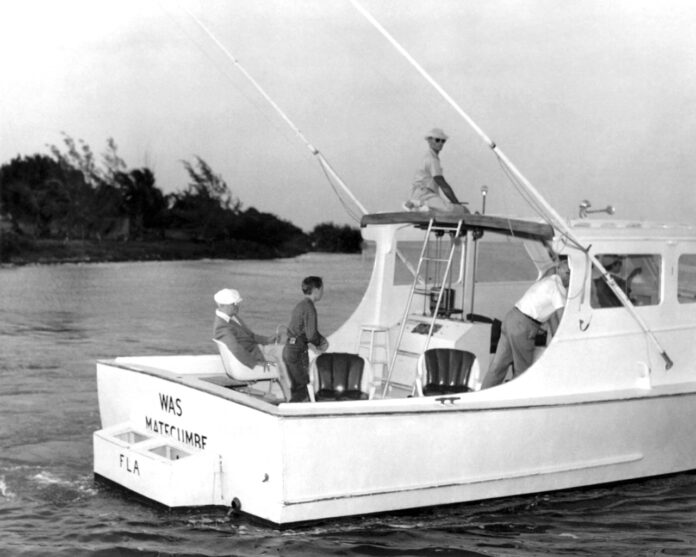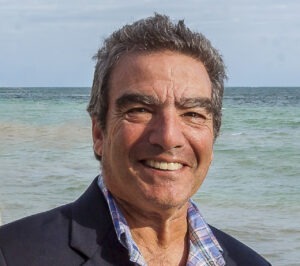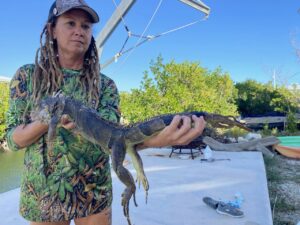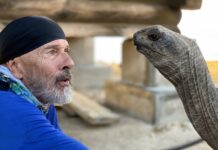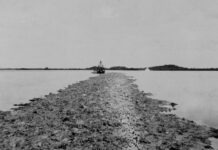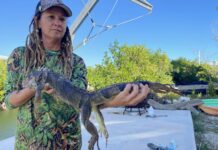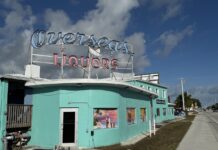The Sold Sisters, Ocean Sotheby’s International Realty’s Sarah Ewald and Sabrina Wampler, invited me to speak at an open house. The Atlantic-front Lower Matecumbe Key property is stunning with its pool, private beach and breezy ocean views. The collection of real estate agents, locals and neighbors sat sipping beverages (water, beer, wine, a delightful rum cocktail) while I shared Lower Matecumbe history.
I didn’t bring props or a screen on which to project historical pictures to punctuate the stories. It was just me standing in front of the pool, the beach, some coconut palms, a hammock and the ocean vista.
I like the structure of a linear story, especially when sharing history. It has a definitive beginning, middle and end, and I find that comforting. I am much better at writing linear stories than telling linear stories in front of a group — especially in intimate, picturesque settings.
Because questions are always welcome, the conversation departed Lower Matecumbe, traveled back and forth in time, and up and down the island chain in no particular order.
I started the talk with the unusual presence of freshwater on the island and how Lower Matecumbe was once home to wells deemed, in some accounts, the most reliable along the island chain. Historically, water bubbled up from the aquifer here and there up and down the island chain, not just at Lower Matecumbe. Digging into the historical record, naturally occurring wells have been identified on Key Largo, Upper Matecumbe, Lower Matecumbe, Key Vaca, Bahia Honda, Big Pine, and Key West, though some accounts conflict. There are others on and in the area of the Keys that had water — Key Biscayne and Lignumvitae Key, for instance.
It was not until 1942 that the water pipeline was turned on and delivered water to the Florida Keys communities. On Sept. 22, the first drop reached Key West. It was only from that point forward that it became possible to walk into a kitchen or bathroom, turn on a faucet, and have water spill out.
What I wished I’d talked about more was the Starck family, which is a great Florida Keys story and a cornerstone of Lower Matecumbe Key’s history. The Starcks are considered the island’s first permanent residents. Walter “Buck” Starck grew up near Southwest Seventh Street and 10th Avenue in Southwest Miami, where his father, also named Walter Starck, worked as a charter fishing captain from the helm of his fishing cruiser Norma II.
The elder Starck operated his charter boat out of the Royal Palm docks in Miami but fished his clients in the waters surrounding Cuba, the Bahamas and the Florida Keys. Sometimes, he fished in the waters near New York in the summer months. In the 1920s and early 1930s, he docked the Norma II at the famed Long Key Fishing Camp.
Buck Starck grew up fishing with his father on the water. Because of his love of the ocean and his aptitude for math, a retired master of celestial navigation began tutoring Buck.
By age 21, Starck had passed all the tests necessary to become certified as a master mariner – the youngest person with that distinction in the country at the time.
Buck married Ruth Shires on Nov. 29, 1937. The same year, he and his father purchased the Whale Harbor Fishing Camp on the east (north) end of Upper Matecumbe Key. The fishing camp had a dock, charter boats, cottages and a restaurant, which were available during the busy winter season. Only the property’s gas station and bar were kept open in the slow summer months.
Buck volunteered and served with the Navy for three years when World War II erupted. Because of his particular skills as a master mariner, he wrote a book on the government’s long-range search and rescue efforts during the war. Then, one day, when Pentagon officials arrived at his post, they attempted to question Buck during a proficiency inspection about procedures in a training manual that he had written.
After the war, the Starcks sold the Upper Matecumbe fishing camp and bought 17 acres on Lower Matecumbe Key in 1946. They transported an old Key lime packing house to the property and used it as a base of operations. That summer, they began building homes for Buck and Ruth, and Buck’s father, Walter.
By Christmas, they had moved into their new homes, where they raised their two boys, Walter and Terry. Though the boys grew up and moved away, Buck and Ruth lived at their Lower Matecumbe home for the rest of their lives. In 2010, they passed away within days of each other. Their lives were celebrated on Nov. 29, what would have been their 73rd wedding anniversary.
Odds are, if you have spent any time on Lower Matecumbe Key, you have seen their home, which is still standing in the parking lot of Robbie’s of Islamorada, the former home of the Starck Fishing Camp.


